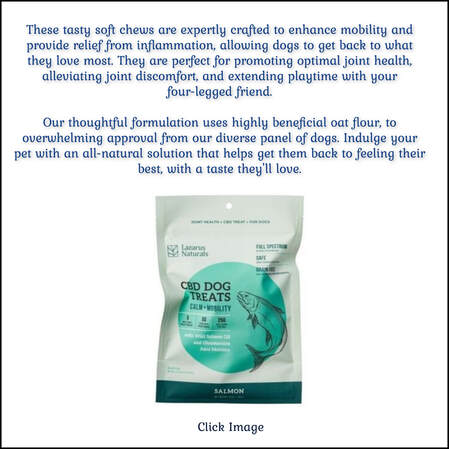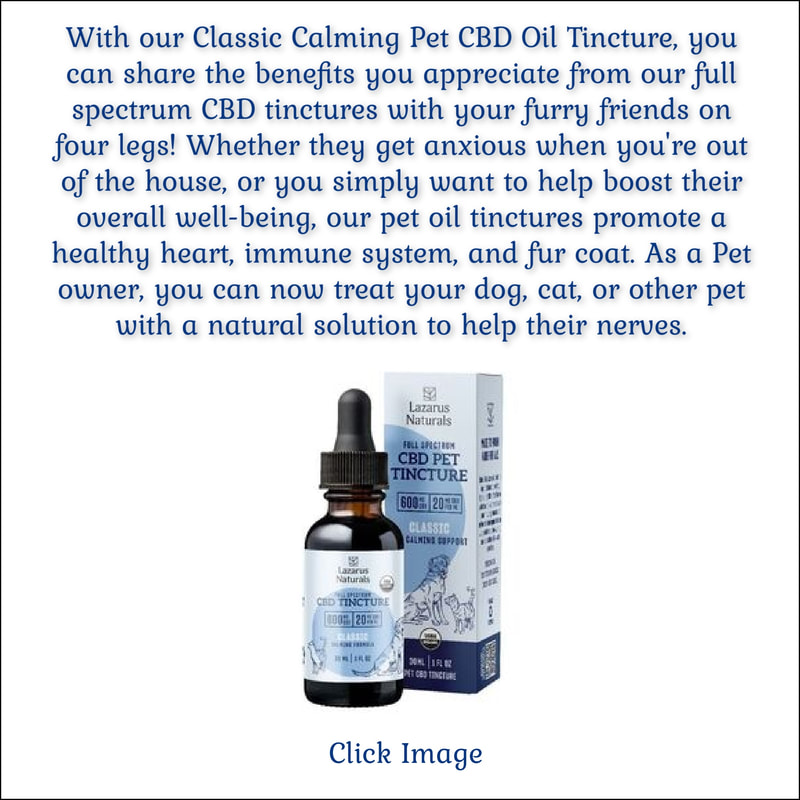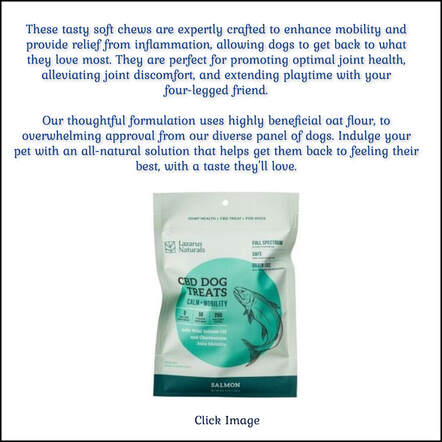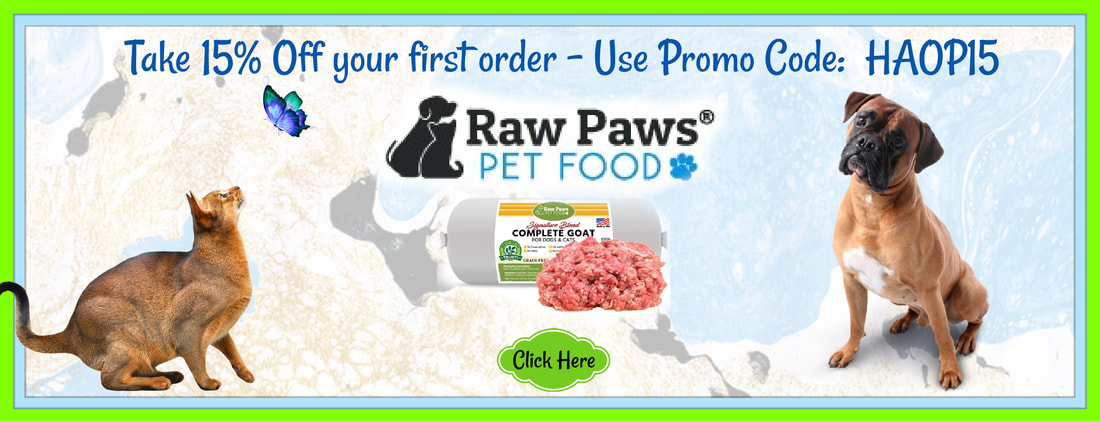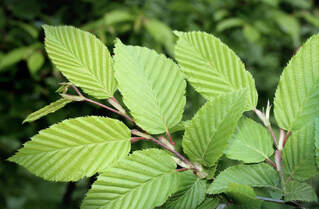
By Carnivora
As you may know, it is potentially dangerous to give certain herbs to pets, especially cats. Many people commonly extrapolate a dose of herbs by using the pet's weight compared to the "standard" 150-pound human. A large dog, however, has a comparatively slow metabolism, while a small dog's rapid heart rate and high energy level may make it difficult to get the desired effect. Cats have very different metabolism and enzymes, and many compounds that are safe for humans and dogs (like aspirin) can be toxic to cats. Slippery Elm (Ulmus fulva) is an exception to the fears and cautions surrounding the use of herbs in animals. It is very safe and non-toxic. The part of the tree used is the inner bark, which is soft and stringy. Herbalists attribute many wonderful healing properties to Slippery Elm: demulcent (soothing, mucilage-forming), emollient (soothing and protective for skin), nutritive (providing specific food nutrients), tonic (promoting healthy function of one or more body systems), and astringent (constricting, binding or drying effect). It can be used both internally and externally. Slippery Elm is one of the herbs used in the original formulation of "Essiac," an herbal brew widely promoted as a cancer-fighter.
As you may know, it is potentially dangerous to give certain herbs to pets, especially cats. Many people commonly extrapolate a dose of herbs by using the pet's weight compared to the "standard" 150-pound human. A large dog, however, has a comparatively slow metabolism, while a small dog's rapid heart rate and high energy level may make it difficult to get the desired effect. Cats have very different metabolism and enzymes, and many compounds that are safe for humans and dogs (like aspirin) can be toxic to cats. Slippery Elm (Ulmus fulva) is an exception to the fears and cautions surrounding the use of herbs in animals. It is very safe and non-toxic. The part of the tree used is the inner bark, which is soft and stringy. Herbalists attribute many wonderful healing properties to Slippery Elm: demulcent (soothing, mucilage-forming), emollient (soothing and protective for skin), nutritive (providing specific food nutrients), tonic (promoting healthy function of one or more body systems), and astringent (constricting, binding or drying effect). It can be used both internally and externally. Slippery Elm is one of the herbs used in the original formulation of "Essiac," an herbal brew widely promoted as a cancer-fighter.
In the gastrointestinal tract, Slippery Elm acts directly. It can be thought of as a sort of natural "Pepto-Bismol." (Pepto-Bismol itself should not be used because it contains salicylate, a.k.a. aspirin). Its mucilage content coats, soothes, and lubricates the mucus membranes lining of the digestive tract. Slippery Elm is an excellent treatment for ulcers, gastritis, colitis, and other inflammatory bowel problems. It is high in fiber, and so helps normalize intestinal action; it can be used to relieve both diarrhea and constipation. It may also help alleviate nausea and vomiting in pets suffering from non-GI illnesses, such as kidney disease. A syrup made from Slippery Elm Bark can be used to help heal mouth ulcers from all causes.
Slippery Elm is said to relieve inflammation of virtually any mucus membrane, and has been used in the treatment of inflammatory conditions of the lungs (bronchitis, asthma), kidneys, bladder (cystitis, FLUTD symptoms), throat (tonsillitis), and joints (arthritis).
Slippery Elm contains many nutrients (carbohydrates, protein, fat, ascorbic acid, beta-carotene, calcium, and several trace minerals) that can be beneficial for recuperating pets, and it may stay down when other foods are not tolerated. Slippery Elm may interfere with the absorption of certain minerals and pharmaceuticals, so is best given separately from any concurrent drug therapy.
Slippery Elm is said to relieve inflammation of virtually any mucus membrane, and has been used in the treatment of inflammatory conditions of the lungs (bronchitis, asthma), kidneys, bladder (cystitis, FLUTD symptoms), throat (tonsillitis), and joints (arthritis).
Slippery Elm contains many nutrients (carbohydrates, protein, fat, ascorbic acid, beta-carotene, calcium, and several trace minerals) that can be beneficial for recuperating pets, and it may stay down when other foods are not tolerated. Slippery Elm may interfere with the absorption of certain minerals and pharmaceuticals, so is best given separately from any concurrent drug therapy.
In the case of cystitis (bladder inflammation), Slippery Elm is thought to soothe the bladder lining. However, it is somewhat high in magnesium, so may be contraindicated in dogs who have an active infection with an elevated urinary pH, where struvite crystal formation may be a risk. (In cats, urinary tract infections are very rarely bacterial.) Slippery Elm bark contains natural pentosans, a class of complex sugars that contains the same compound found in the drug "Elmiron®,"the major pain-relieving treatment for interstitial cystitis (IC) in women. Pentosan has been used by the pharmaceutical industry as an anticoagulant and anti-inflammatory for more than 40 years. (Anticoagulant effects are not seen with normal oral administration.) Since bladder disease in cats is very similar to that in women, slippery elm may be especially beneficial for our feline friends.
Externally, a soothing paste of Slippery Elm powder (mix the powder with a little cold water) can be used as a poultice for hot spots, insect burns, rashes, scratches, ulcerated areas, or other shallow wounds. Native Americans used Slippery Elm bark to stop bleeding. It forms a natural "bandage" that can be left in place for several hours, if you can convince your dog to leave it alone!
To give internally, mix about 1/4 teaspoon of Slippery Elm bark powder with cold water for every 10 pounds of body weight. For very small dogs, it is fine to use the same 1/4 teaspoon dose. The bulk powder may be very fluffy, so pack it down as much as possible to measure it. Slippery Elm powder will absorb many times its own weight in water, so be sure to add enough to make a moderately thick gruel. This gruel can be given before meals by syringe or added to food. It has a slightly sweet taste and is usually well-tolerated by cats and dogs when mixed with food. Give a dose 5 minutes before meals for sore throat, and before or with meals for digestive tract problems, such as inflammatory bowel disease, until symptoms resolve.
To give internally, mix about 1/4 teaspoon of Slippery Elm bark powder with cold water for every 10 pounds of body weight. For very small dogs, it is fine to use the same 1/4 teaspoon dose. The bulk powder may be very fluffy, so pack it down as much as possible to measure it. Slippery Elm powder will absorb many times its own weight in water, so be sure to add enough to make a moderately thick gruel. This gruel can be given before meals by syringe or added to food. It has a slightly sweet taste and is usually well-tolerated by cats and dogs when mixed with food. Give a dose 5 minutes before meals for sore throat, and before or with meals for digestive tract problems, such as inflammatory bowel disease, until symptoms resolve.
Alternative articles for Slippery Elm
http://www.naturallyhealthydogs.co.uk/blog/2011/11/04/SpotLight-on-Slippery-Elm.aspx
http://www.naturallyhealthydogs.co.uk/blog/2011/11/04/SpotLight-on-Slippery-Elm.aspx
Slippery Elm for Better Pet Digestion
Dr Yasson’s Guidelines for GastroIntestinal Troubles
Dr Michele Yasson, HolVet
General Considerations. These guidelines can be very helpful in cases of gastritis, vomiting, gastric or duodenal ulcer, enteritis, colitis, constipation, and diarrhea, but they are just basic first aid principles. Use them in conjunction with good common sense and your veterinarian’s supervision. Seek professional help (yes, you can call me here at HolVet, or review these measures with any veterinarian) if the problem persists or worsens.
Fasting. For individuals who can fast, a 24 hr period of withholding food can help give the digestive system a rest, allowing inflammation and spasm to calm down. This would mean skipping two meals if you are feeding two times per day. It is not advisable for all pets, for example, overweight cats or diabetics, so check with me (Carnivora) or your own veterinarian before you start. Do not withhold water! In fact, hydration should be encouraged with milk and/or broth/soup diluted 50/50 with water.
Dr Michele Yasson, HolVet
General Considerations. These guidelines can be very helpful in cases of gastritis, vomiting, gastric or duodenal ulcer, enteritis, colitis, constipation, and diarrhea, but they are just basic first aid principles. Use them in conjunction with good common sense and your veterinarian’s supervision. Seek professional help (yes, you can call me here at HolVet, or review these measures with any veterinarian) if the problem persists or worsens.
Fasting. For individuals who can fast, a 24 hr period of withholding food can help give the digestive system a rest, allowing inflammation and spasm to calm down. This would mean skipping two meals if you are feeding two times per day. It is not advisable for all pets, for example, overweight cats or diabetics, so check with me (Carnivora) or your own veterinarian before you start. Do not withhold water! In fact, hydration should be encouraged with milk and/or broth/soup diluted 50/50 with water.
Partial Fast. Often fasting is too difficult for the pet, or too emotionally difficult for the owner! A modification of this idea is what I call a partial fast. This would be to feed half of the usual amount fed per day. In other words, if your pet normally eats 1/2 of a bowlful twice daily, the total would be 1 bowlful per day and the “partial fast” would be a total of ½ bowlful for the whole day. This is the amount that will be split into the smaller meals described below.
Small meals. The small meals mean there is less bulk for the digestive system to handle at any one time, and the smaller loads are easier. After fasting (or instead of fasting) the usual daily meals should be divided into 4-8 smaller meals. Do not increase the amount per day, just the amount fed at any one time. This may result in meals of perhaps a single teaspoon in amount. You may feed this way for however long the symptoms last. If you return to regular sized meals too soon the symptoms may return whether they be vomiting, diarrhea, etc. Return to larger meals slowly. For example, if you are feeding 6 meals a day with good results, meaning the symptoms have gone, try four meals daily for the next 2 or 3 days. If all goes well and there is no upset from these larger meals, try 3 meals daily for 1 to 3 days, etc.
Small meals. The small meals mean there is less bulk for the digestive system to handle at any one time, and the smaller loads are easier. After fasting (or instead of fasting) the usual daily meals should be divided into 4-8 smaller meals. Do not increase the amount per day, just the amount fed at any one time. This may result in meals of perhaps a single teaspoon in amount. You may feed this way for however long the symptoms last. If you return to regular sized meals too soon the symptoms may return whether they be vomiting, diarrhea, etc. Return to larger meals slowly. For example, if you are feeding 6 meals a day with good results, meaning the symptoms have gone, try four meals daily for the next 2 or 3 days. If all goes well and there is no upset from these larger meals, try 3 meals daily for 1 to 3 days, etc.
Bland meals. The less work the GI system has to do the more healing it can do, so feeding easily digestible, low residue foods can help. Low residue means low fiber/low waste, therefore less stuff makes it to the “back door” of the digestive system and the colon works less and rests more. The patient’s usual diet can often be used during times of GI distress, however it should be mixed 50/50 with cooked white rice or cream of rice cereal, and/or cottage cheese or mashed potatoes. You can also feed 100% rice/potato/cheese choice with the cheese being a small amount of something strong flavored like grated Parmesan. It is even gentler for very sick pets. Again, as with the small portions recommendations above, use this tactic as long as needed, and then gradually wean off the bland ingredient on to the regular diet over several days. Also note that I never recommend grains, including rice, be fed long term. They tend to create inflammation and promote yeast which creates its own group of GI and skin/ear problems. However, the short term benefits of the palatability, digestibility, and concentrated calories outweigh the negative aspects.
Higher Fiber meals. Paradoxically, a high fiber, high residue diet is occasionally helpful for loose stools/diarrhea. It is not often possible to tell in advance if your pet’s diarrhea will respond better to a high fiber diet. It is only by trial and error that you will know. The regular diet can be mixed 50/50 with overcooked brown rice. Overcooking allows the tough outer layer to split open so the easy to digest insides are exposed. This compensates for their lack of chewing their food. Be sure to add a bit of extra water to compensate for the extra cooking time. Do not try a high fiber diet unless you have unsuccessfully tried the low residue strategy first.
Higher Fiber meals. Paradoxically, a high fiber, high residue diet is occasionally helpful for loose stools/diarrhea. It is not often possible to tell in advance if your pet’s diarrhea will respond better to a high fiber diet. It is only by trial and error that you will know. The regular diet can be mixed 50/50 with overcooked brown rice. Overcooking allows the tough outer layer to split open so the easy to digest insides are exposed. This compensates for their lack of chewing their food. Be sure to add a bit of extra water to compensate for the extra cooking time. Do not try a high fiber diet unless you have unsuccessfully tried the low residue strategy first.
**Slippery Soup™ / Slippery Elm Tea. I use this herb more than any other in my practice! It provides superb relief, and has kept many patients from hospitalization. It is a soothing nutritive herb which is perfectly suited for sensitive or inflamed mucous membrane lining of the digestive system. The bark contains mucilage and tannins that act as demulcent, emollient, protectorant, and astringent. You might think of it as a soothing internal bandage coating the digestive tract for its entire length. Imagine the relief for your pet to have a jelly-like coating soothing in an esophagus (food pipe) burned by acrid vomitus, or in an ulcerated colon. This herb makes a huge difference. It is easy to make and has a very bland taste which makes it easy to add to tasty things.
Slippery Soup™ Preparation and Administration: You can find the herb in a dry powder form in capsules, as dried leaf in tea bags, or as loose dried leaf in the “bulk” products section of many health food stores. Any of these forms will do. Do not use the tincture (which already comes as a liquid in a dropper bottle). It may help in a few cases but it will not have all the healing physical properties of the brewed tea. The same goes for mixing the dried herb directly into the food. It will not give all the benefits of the brewed tea.
1. Simple Tea Method. You’ll prepare this medication just like a tea you might drink yourself. First, put a heaping teaspoon of dried herb in a coffee mug, and add 8-12 oz of boiling water or diluted broth. Allow to cool. If using capsules, open them up, discarding the shells, and note that it may take a bit less to get good results.
2. Long-Brew Method. To get more out of your supply or to create a thicker medicine use the same amounts of herb and water listed above and simmer for 10-20 minutes.
3. The resultant liquid, once cooled, should be somewhat thicker than water. If it is as thin as water double the dry herb amount next time, or try the long-brew method. If it is thick like jelly, that’s fine. You can use half of the dosages listed below. This makes it much easier to spoon feed reluctant patients! Do not worry about any loose herb in the liquid. It does not have to be filtered out. This infusion or decoction will keep for about 5 days in the fridge.
Slippery Soup™ Preparation and Administration: You can find the herb in a dry powder form in capsules, as dried leaf in tea bags, or as loose dried leaf in the “bulk” products section of many health food stores. Any of these forms will do. Do not use the tincture (which already comes as a liquid in a dropper bottle). It may help in a few cases but it will not have all the healing physical properties of the brewed tea. The same goes for mixing the dried herb directly into the food. It will not give all the benefits of the brewed tea.
1. Simple Tea Method. You’ll prepare this medication just like a tea you might drink yourself. First, put a heaping teaspoon of dried herb in a coffee mug, and add 8-12 oz of boiling water or diluted broth. Allow to cool. If using capsules, open them up, discarding the shells, and note that it may take a bit less to get good results.
2. Long-Brew Method. To get more out of your supply or to create a thicker medicine use the same amounts of herb and water listed above and simmer for 10-20 minutes.
3. The resultant liquid, once cooled, should be somewhat thicker than water. If it is as thin as water double the dry herb amount next time, or try the long-brew method. If it is thick like jelly, that’s fine. You can use half of the dosages listed below. This makes it much easier to spoon feed reluctant patients! Do not worry about any loose herb in the liquid. It does not have to be filtered out. This infusion or decoction will keep for about 5 days in the fridge.
4. Add the liquid to the food at mealtimes, or add to the water bowl, or give as a treat. The goal is 4 doses per day, but even once daily will provide some relief. I hate to force feed anything. But this is one treatment that is probably worth it if you must. If force feeding is your only choice use the stove top brewing method and aim for a thicker, jelly like consistency so you can administer less physical amount for the same beneficial effect.
5. Palatability Tricks. To give Slippery Soup™ as a treat (my preferred way!) you can do several things. You can mix the liquid 50/50 with broth, soup, a favorite canned food, milk, tuna juice, or baby food. It may not smell great to you, but these soups are highly appreciated by pets! You can also add it to yogurt or cottage cheese if dairy is not an issue.
6. Dose size (goal is 4 doses per day):
Cats and Dogs under 25 lbs 1-2 Tablespoons
Dogs 25-50 lbs 2-4 Tablespoons
Dogs 50 lbs and up ¼ to ½ cup
Epilogue I. Slippery Elm is a very safe herb. It can literally be a life saver by preventing dehydration from continued vomiting or diarrhea. It is virtually impossible to overdose, and it can be used for extended periods of time. However, if you find your pet needs this treatment for several weeks and the symptoms still reappear when you attempt to wean off or discontinue, this is a sign of significant chronic disease and you should seek professional veterinary care.
Epilogue II. I am a Natural Health Coach for people as well. These first aid guidelines are solid recommendations for humans as well. This includes the Slippery Elm information. You can count human adults as “Dogs 50 lbs and up” for dosing.
Good Luck! Good Healing!
5. Palatability Tricks. To give Slippery Soup™ as a treat (my preferred way!) you can do several things. You can mix the liquid 50/50 with broth, soup, a favorite canned food, milk, tuna juice, or baby food. It may not smell great to you, but these soups are highly appreciated by pets! You can also add it to yogurt or cottage cheese if dairy is not an issue.
6. Dose size (goal is 4 doses per day):
Cats and Dogs under 25 lbs 1-2 Tablespoons
Dogs 25-50 lbs 2-4 Tablespoons
Dogs 50 lbs and up ¼ to ½ cup
Epilogue I. Slippery Elm is a very safe herb. It can literally be a life saver by preventing dehydration from continued vomiting or diarrhea. It is virtually impossible to overdose, and it can be used for extended periods of time. However, if you find your pet needs this treatment for several weeks and the symptoms still reappear when you attempt to wean off or discontinue, this is a sign of significant chronic disease and you should seek professional veterinary care.
Epilogue II. I am a Natural Health Coach for people as well. These first aid guidelines are solid recommendations for humans as well. This includes the Slippery Elm information. You can count human adults as “Dogs 50 lbs and up” for dosing.
Good Luck! Good Healing!
Optional link to purchase slippery elm in powder form: https://www.mountainroseherbs.com/products/slippery-elm-bark-powder/profile

